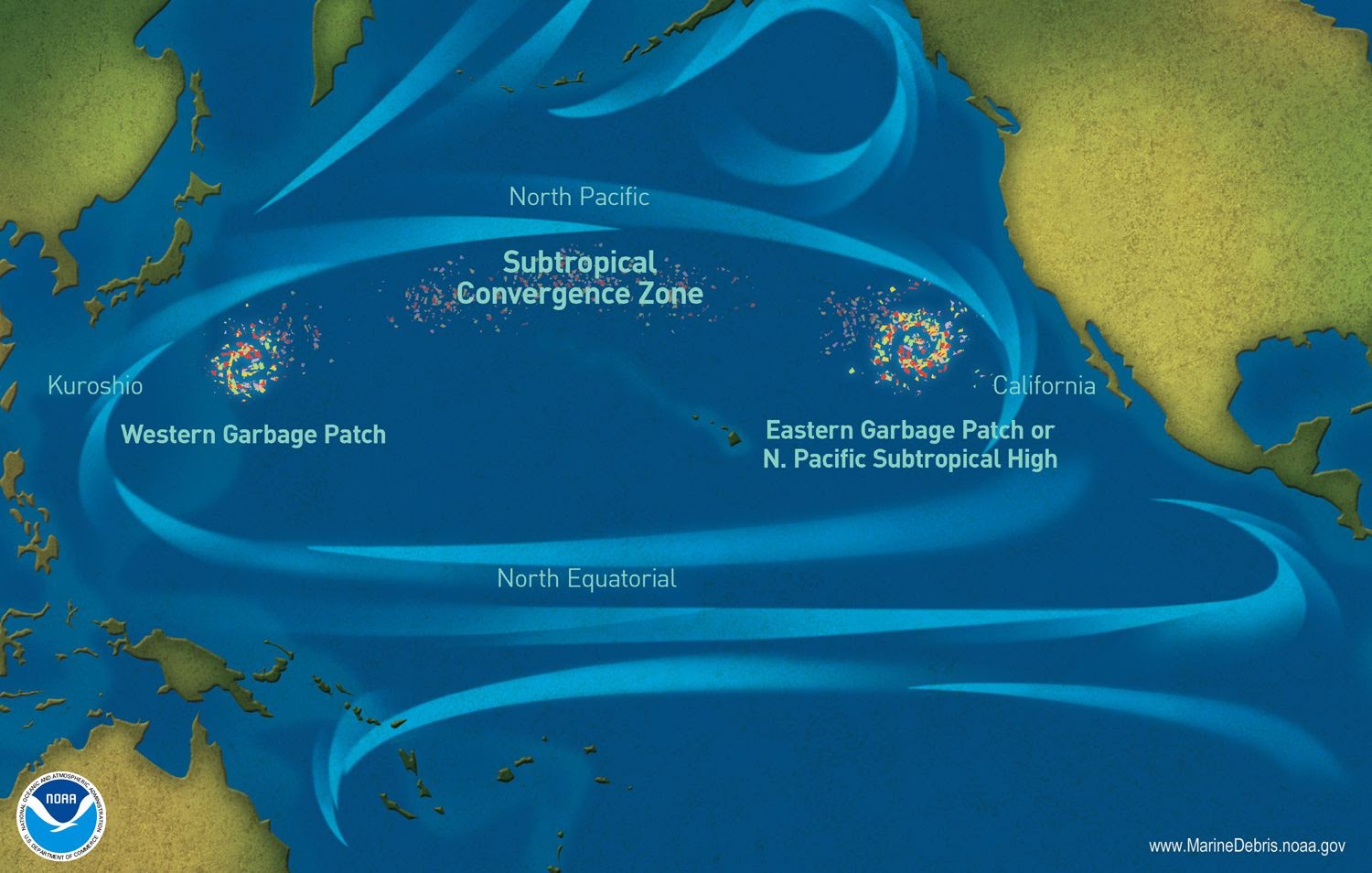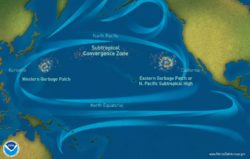
What is the Great Pacific Garbage Patch?

Photo Credit: NOAA
You may have heard of the Great Pacific Garbage Patch but what is it, how did it start, and can we do anything about it?
The Great Pacific Garbage Patch is the name for a collection of marine debris that accumulated over time due to converging ocean currents called gyres. Gyres are unique forms of ocean currents because they are large systems that move in a swirling motion, leaving marine debris caught in their path to move and be trapped in the calmer, more stable middle of the gyre. Two segments of the Great Pacific Garbage Patch exist in the Pacific Ocean: the Western Garbage patch, which is closer to Japan, and the Eastern Garbage Patch, which is closer to southern California and Mexico.
Almost entirely comprised of microplastics – small pieces of plastic that measure less than five millimeters long – and discarded fishing gear floating at the water’s surface, the Great Pacific Garbage Patch formed due to the buoyant and durable nature of these materials, which allows them to float for years in the ocean without breaking down. Larger and heavier pieces of debris sink, and it is likely there is even more garbage below either of the two patches. In fact, scientists recently found that about 70% of all marine debris eventually sinks to the ocean floor.
Where does all the debris that comprises the Great Pacific Garbage Patch come from? An estimated 54 percent of debris swirling in the Patch originates from land in North America and Asia, while another 20 percent likely comes from boats, large cargo ships, cruise ships, and offshore oil rigs that either lose or intentionally discard debris into the ocean. Once there, debris will float along with currents until it ends up trapped between gyres for an uncertain amount of time.
Marine debris isn’t just unsightly, it is harmful to the plants and animals that call the ocean home. From entanglement of large, migratory animals like whales to being mistaken for food by sea turtles, fish, and sea birds, marine debris causes physical (and at times lethal) harm to marine animals.

Photo Credit: Key Dives
Microplastics and other debris can also harm plankton and algae by blocking the sunlight they need to be able to undergo photosynthesis and produce energy for themselves, which causes harm throughout the marine food web. Surprisingly, marine debris can also serve as a vehicle for species to travel to far-off habitats and settle in new ecosystems, meaning marine debris can promote the spread of invasive species throughout the ocean.
Prevention of marine debris entering the marine environment is the best strategy to prevent the growth of the Great Pacific Garbage Patch, which you can do at home by reducing your own dependence on single-use plastics in your daily life, helping with trash cleanups in your community, or upcycling items you already have on hand. We can also encourage our elected officials to support policies focused on preventing marine debris pollution and fund work that aims to remove marine debris from the ocean.
